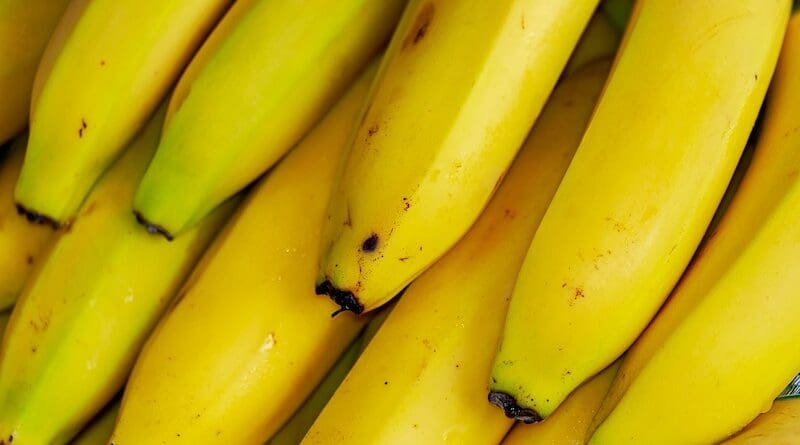Imperial Fruit: Bananas, Costs And Climate Change – OpEd
The curved course of the ubiquitous banana has often been the peel of empire, its sweetness masking a sharp, bitter legacy. Arab conquerors introduced it to the African continent as they cultivated a slave market. European imperialism did the same to the Americas via the Canary Islands, insinuating the luscious fruit into markets of solid exploitation and guaranteed returns. In time, demand for bananas grew. Cheap capital cushioned it.
Corporation power and secondary colonisation, exercised through such ruthless entities as the United Fruit Company (now the jauntily labelled Chiquita), continued the legacy, collaborating with corrupt elites while exerting control over large swathes of the local economy. The Banana Republic was axiomatic to the exertion of US power in the agriculture of the South. Names like Lorenzo D. Baker, who first imported bananas to the US in 1870, preceding Philadelphia’s World Fair promotion in 1876, and Minor C. Keith and Andrew W. Preston, should be marked in bold in such efforts. It is they who led the way to the creation of the United Fruit Company.
Marcelo Bucheli offers an adequate description about United Fruit as a broad based alliance that led to the creation of an “impressive production and distribution network” made up of “plantations, hospitals, roads, railways, telegraph lines, housing facilities, and ports in the producing companies, a steamship fleet (the Great White Fleet, which eventually became the largest privately owned fleet in the world), and a distribution network in the United States.” Some fruit; some capital.
The company’s indelible staining of Latin America’s politics was ingloriously affirmed with its role in overthrowing the democratically elected Guatemalan leader Jacobo Árbenz, whose expropriating measures to award property to landless citizens proved too much. The resulting Washington-backed coup, encouraged by such figures as United Fruit’s main shareholder Samuel Zemurray, resulted in a military dictatorship leading to 200,000 deaths.
In 1954, with the coup in full swing, Árbenz could only observe with tragic sadness that “the pretext of anti-communism” had been cited to overthrow his government. “The truth is very different. The truth is to be found in the financial interests of the fruit company and other US monopolies which have invested great amounts of money in Latin America and fear that the example of Guatemala would be followed by other Latin American countries”.
There is good reason then to take a rather withering view of the banana trade. It has become the feature fruit of monstrous monopolies, a brutal currency of exchange, the means by which exploitation has been cultivated for huge corporate gain. In some cases, its pricing has been kept low as the costs in production, be they in terms of land and people. They are the unwanted ghosts in the unaccounted equation.
Following the fruit to lands of its cultivation is to take a journey to inequality. The island of Mindanao in the Philippines produces 84% of the country’s bananas and hosts 25% of the country’s population. On that same island live over 35% of the country’s poorest residents. Historically, it was only the advent of the cooperative FARMCOOP and the passing of the Land Reform Law that enabled landless, indigent farmers to claim some degree of autonomy from the crushing conditions of the international banana market.
After the viciousness of imperialism, exploitation and profit, the banana now faces something of a different challenge. Climate, it has become trite to say, is playing up. The banana moguls, sellers and cultivators are getting anxious. Supply lines and prices are being affected. “Producers like Guatemala, El Salvador, and Costa Rica, will see a negative impact of rising temperatures over the next few decades,” predicts a confident Dan Bebber, a student of crop pathogens and sustainable agriculture.
Climate disruptions have also been something of an encouragement to threatening diseases to the crop, notably the TR4 fungus. The World Banana Forum, which benignly sounds like the Sorghum Appreciation Society with polite tea breaks and conference papers, offered a stolid seriousness. The BBC was there to gather some material, coming with such prosaic spurts as those of Pascal Lu, a senior economist at the UN’s Food and Agriculture Organisation (FAO): the impact of climate change was such as to pose an “enormous threat” to banana production.
CBS News was also at hand to be told by Sabine Altendorf, yet another economist at the UNFAO with an interest in supply chains of agricultural products, that any such infection would essentially doom the crop. “Once a plantation has been infected, it cannot be eradicated. There is no pesticide or fungicide that is effective.”
Lu offers a diplomatic splash on the whole matter. He speaks of certification, keeping the bananas “greener” (no irony intended) and extols the value of such regulations as “they help producers seize the opportunity of making their production systems more sustainable.” Inevitably, he offers the following: “But of course, they also come with costs for producers because they require more control and monitoring systems on the part of the producers and the traders. And these costs have to trickle down to the final consumers.”
Ultimately, such certification remains overwhelmingly voluntary, by which the producers pay a fee for the process, thereby receiving price premiums and market access for upholding certain market standards.
The environmental ledger for humanity, and much of the globe, engenders worry. Climate change is dooming us in various ways. States and communities will be submerged. Droughts will empty tracts of land of agrarian occupation. Agricultural patterns will alter. It is making the cultivation of crops in certain areas of the world unfeasible and untenable. And this potassium rich source, so revered for shape, size and flavour, its brutal legacy often ignored at the shopping counter, may have met its match.

